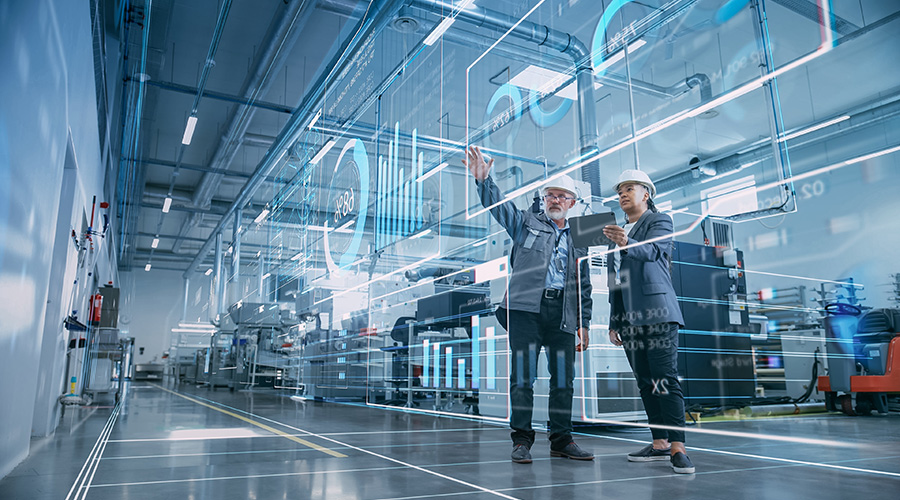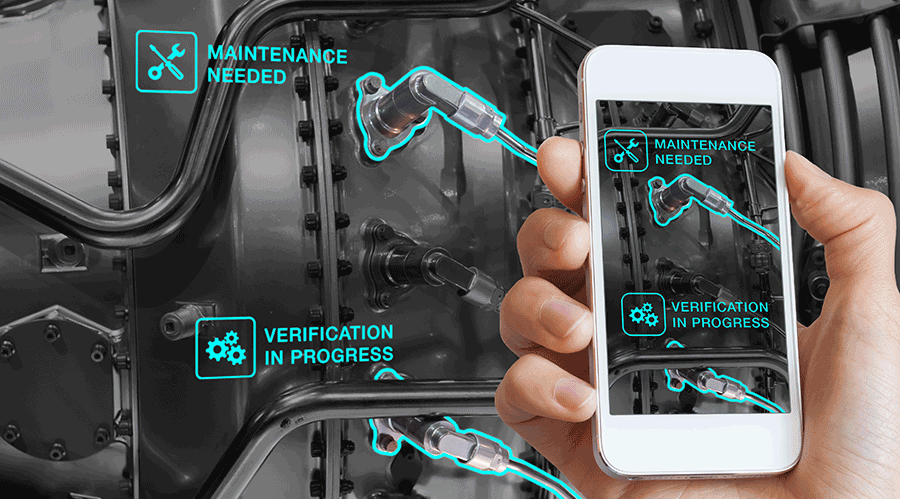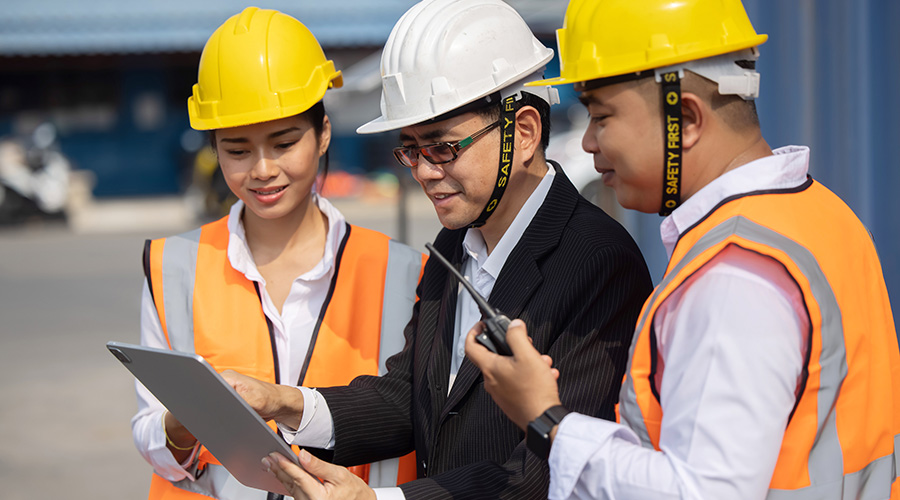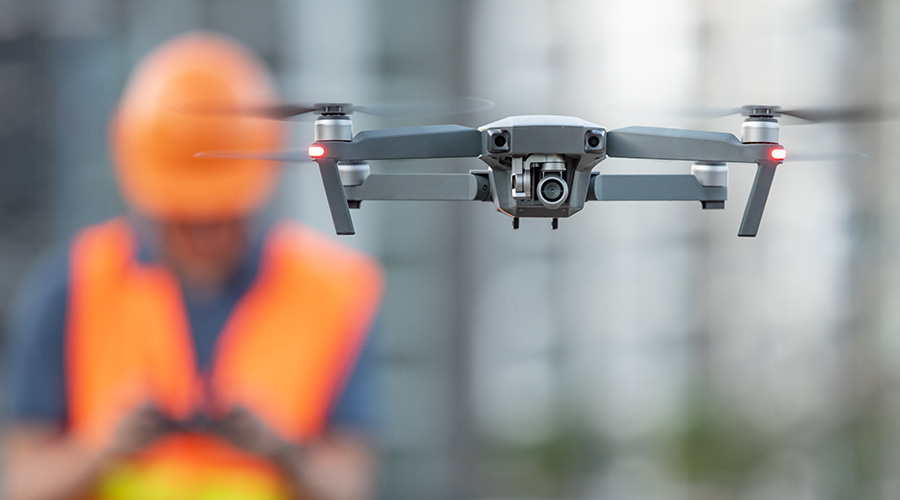Facilities Embracing Smart Technology for Infection Control Practices
Pandemic pushes managers to adapt quickly to faster and more efficient cleaning processes.
By Maura Keller, Contributing Writer
Building operators and managers understand the importance of establishing clean, welcoming environments both on their building’s interior and exterior.
The pandemic has pushed building managers to quickly shift and adapt to different cleaning and sanitation practices. In addition to purchasing new, more effective cleaning chemicals, they are investing in innovative smart technologies to prevent cross contamination, improve janitor productivity, and enhance the occupant experience. These efforts have catapulted cleaning protocols into a whole new level of sanitation procedures, and it appears that many of these smart cleaning technologies are here to stay.
Historically speaking
Using technology to prevent surface-to-human cross-contamination has been in place for years, primarily in hospitals and healthcare environments.
According to George Schmidt, FMP, global head of soft services at JLL, infection protection and preventing surface-to-human cross-contamination spans decades. Products such as antimicrobial surface protectants (ASP) were originally developed as a way to reduce a number of healthcare-associated infections such as pneumonia, MRSA and c.diff for patients in hospitals.
MRSA, due to its ease of surface-to-human cross-contamination, has been known to severely affect workers in hot/humid, poorly maintained manufacturing spaces, refineries, and in unsanitary industrial spaces, Schmidt says.
“That being said, proper placement of polymer-based ASP films can help reduce potential bacteria cross-contamination from doorknobs to shared tools, push plates, elevator buttons, and handrails,” Schmidt says. “ASPs provide a layer of protection that can last 30, 60, or even up to 90 days with proper maintenance.”
With the onset of the 2020 pandemic, JLL looked at ways to bring healthcare best practices to non-traditional spaces, such as retail, general office, manufacturing, government, and educational facilities. This included increased fresh air, use of MERV-13 air filters, strategic deployment of ultraviolet-C (UV-C) technology, and the development of pandemic-response playbooks to bring a holistic approach to developing a proper response during uncertain times, Schmidt says.
“As for the impact on cleanliness, JLL had to find a proper balance, including adjusting cleaning schedules and labor to match client density in buildings and space utilization,” Schmidt says. To do this, JLL invested in Internet-of-Things (IoT) sensor technology to help identify spaces being used by their clients and leveraged these sensors to “map” daily cleaning routes.
“Fast-forward to 2023, JLL continues to leverage IoT (proximity, temperature, overhead optical and haptic sensors), data analytics algorithms, and user-customized dashboards,” Schmidt says. “This empowers our trade-specific subject-matter experts to identify efficiencies for each account we support.”
As Schmidt reflects back to 2020 and through the early parts of 2021, almost every return-to-office program that aligned with Centers for Disease Control and Prevention guidelines called for a two-step process when cleaning/disinfecting surfaces. As Schmidt explains, first the surface had to be cleaned to remove any dust or soil. Second, the surface had to be properly disinfected with a Food and Drug Administration-approved disinfectant. This two-step process severely reduced cleaning productivity and almost doubled the labor hours needed to properly maintain a space. It wasn’t until April 2021 that the CDC reduced the requirements for surface disinfecting.
“It was around this time when JLL made the decision to invest in a broader 'smart-building' technology that met the current needs of clients and their spaces and was also scalable and futureproof,” Schmidt says. “As we began to develop these programs, we first had to start with setting new standards for service delivery – janitorial.”
JLL partnered with top suppliers from around the world to develop “Cleaning Essentials,” JLL’s proprietary framework for cleaning services. Embedded in “Cleaning Essentials” is the flexibility to adopt various technologies to boost staff productivity, increase operational efficiencies, and improve the occupant experience, Schmidt says.
“To enhance the overall process, we leverage industry experts in concert with strategic sourcing to identify the right vendor partners and the right technology to meet each client’s specific needs,” Schmidt says.
Alec Fomin, director of tenant experience with Sage Realty, says the biggest benefit of smart technology within the sanitation space has been the transition from cleaning reactively to cleaning proactively. By using data to see where tenant activity is, the team at Sage Realty can pinpoint where activity is happening and be thoughtful about responding.
To accomplish this, Sage Realty is utilizing a smart monitoring system into its buildings. This wireless communication platform notifies facility managers and janitorial staff when something in a restroom needs immediate attention, such as dispenser issues or low product levels. The driving factor for Sage in choosing to use this technology was to improve the tenant experience and ensure consistently high levels of quality.
“This emerging technology gives the janitorial staff a network of eyes and ears throughout a building that would be almost impossible to replicate with a traditional labor model,” Fomin says. “The technology allows cleanliness to be monitored using data that is collected automatically. Since we've adopted the platform, we have seen reductions in paper towel waste of 9 percent and of toilet tissue waste of 24 percent, and outages – situations where no product is available – have dropped 20 percent.”
Sage Realty also has received better insight into customer activity. As Fomin explains, this smart technology shows the team who is coming to work and how their buildings are being utilized.
“We have a significantly better ability to index the performance of business units, as we are able to compare the performance of each on a dashboard, which makes us smarter operators,” Fomin says.
Ashley Sutton is property associate at 800 Fulton, which is a Class A office building in Chicago. The building is designed to address the health and wellness of tenants and considered the smartest building in Chicago. The building is LEED Platinum, Wired Score Platinum, Smart Score Platinum and Well Gold certified.
Sutton says that smart technology has helped janitorial efficiency in 800 Fulton by lowering the amount of unnecessary dispenser checks.
“There are so many benefits to utilizing smart technology, such as convenience, sustainability, and efficiency,” Sutton says. “I hope more buildings begin to incorporate smart technology in as many ways as they can.”
Embracing challenges
As with any smart technology integration, due diligence measures need to be taken. For example, before JLL can scale any technology, there has to be an initial investment, pilots, and a measurable proof of concept. JLL mitigates a lot of these initial costs by leveraging its Spark program, which invests in and enables tech startups to disrupt the real-estate industry by combining them with the global presence of JLL. An example of how JLL Spark has expedited the incubation, launch, and adoption of innovation is the company’s “Dynamic Cleaning” offering, which was launched in 10 months.
Cost is another challenge when integrating smart technology into a building’s cleaning protocols, but another is the never-ending cycle of evolving technology.
“We can’t embrace every shiny widget that comes along,” Schmidt says. “We do our due diligence, we invest in research and expertise, and, most importantly, we listen to our clients and the market.”
Lastly, there’s the human element and the element of change, so the adoption of new and emerging technologies will always be a challenge.
“‘We’ve always done it this way,’ some would say, are the six most expensive words in business,” Schmidt says. “We know that past success doesn’t guarantee future success, especially when the only constant is change.”
To offset any issues that emerge from the introduction of smart technology in infection protection, JLL emphasizes training and deploying the necessary resources to ensure adoption and success.
As Sage launched smart monitoring system technology in six of their properties at the same time, they have seen variance with field adoption and training.
“We have been learning as we go and managing for success at the same time. As we learn more about the systems and how to apply the data to creating a more efficient environment, we have been able to manage these smart technologies better,” Fomin says.
Facility management experts agree that smart technology within the sanitation management of buildings is here to stay.
“Without a doubt technology, whether it be for cleaning enhancements or full-blown building automation, is the future of facilities,” Schmidt says. “It is an integral part of a beautiful web designed to deliver service. At the end of the day, that’s what we do; we deliver a service to our clients. There are many elements to that delivery – people, processes, and technology. The list goes on, but to truly be successful, we have to navigate a fine line between embedding technology into the day-to-day service delivery and also finding balance with the human experience.”
Maura Keller is a freelance writer based in Plymouth, Minnesota.
Related Topics:












